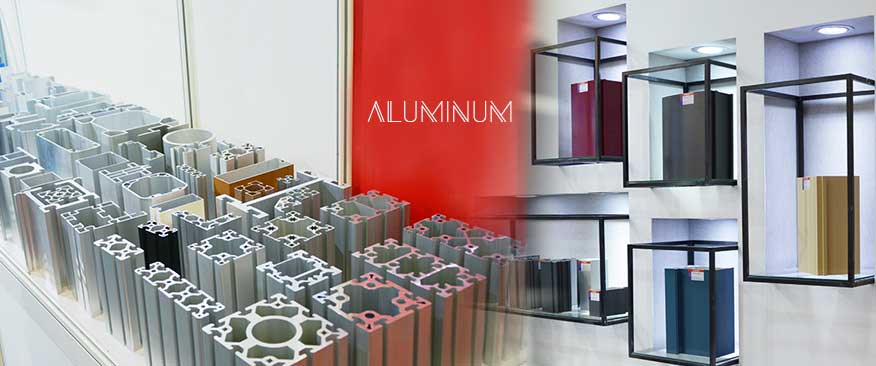Welcome to Zhongjda Industry
Toggle Navigation

The versatility of aluminum has made it one of the most sought after raw materials for design and construction. The metal is unique in many ways; high strength-to-weight ratio, tolerance against corroding environments, conductivity, ductility, non-magnetic properties, and recycling attributes, which makes it possible to use repeatedly without losing integrity. It is no surprise, aluminum and its alloys have applications in a wide range of industries, from aircraft to house construction to design using extrusion process.
Aluminum’s malleability allows it to be machined and casted easily, which complements the extrusion process. In the aluminum extrusion process, aluminum alloy is transformed using machines into construction and design materials with a definitive cross-sectional profile and shape, such as aluminum extruded tubing, aluminum angles, and aluminum profiles. The resulting products by the extrusion process offer strength and stability, yet being one third the density and stiffness of steel. Its strength is supplemented by alloying it with other materials.
Benefits that aluminum offers over other metals and raw materials include:
Less machining and ability to be extruded in complex shapes. You can extrude aluminum to achieve any design demand. Whether it is intricate or straight shapes, extrusion reduces the need of manufacturing component parts, which cuts down on assembly time. Other metals are also used for extrusion process; however, shapes that can be achieved by aluminum extrusion sometimes cannot attained by any other metal.
Low cost. Aluminum is the most cost effective metal in regards to the extrusion process; other metals that complement extruding are significantly expensive to render any profit. Moreover, the cost of extruding aluminum is quite low compared to other processes such as casting, roll forming, molding and forging.
Structural efficiency. Even after the extrusion process, aluminum maintains its optimum structural integrity, which makes it suitable for carving into intricate shapes. Additionally, the metal can be easily alloyed, unlike other material, when extra strength is needed around corners and cross-sections.
Light weight. Aluminum, unlike any other metal, is strong and durable while being light. The products made from aluminum can be half the weight and still have equivalent structural integrity in comparison to other heavy materials that can be readily fabricated.
Attractive and resistant finishes. Giving electrolytic coating to aluminum through the aluminum anodizing process for protective or decorative purpose is relatively easy. Designers and fabricators can render virtually any color they desire.
Low maintenance. The metal is naturally resistant to corrosion, giving the finished products a long life and durability. Aluminum does not require layer of paint to protect it, the finish provided during the fabrication process gives it all the protection it needs to last a long time.
Among all the characteristics, its ability to be recycled completely without any loss of strength fares it above other similar raw materials. Whether it is the consumer, fabricator, or environment agencies—all show support aluminum as a raw material.
In the present day complex construction process, aluminum practically subdues all structural, thermal, aesthetic and acoustic challenges that designers and fabricators throw at it. It is virtually the most adaptable metal we have on earth.